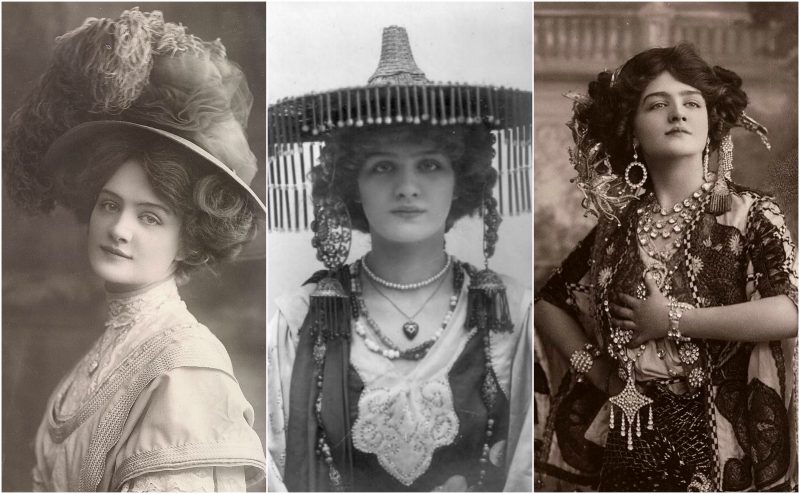Lily Elsie: Born Elsie Hodder of Armley, West Yorkshire, England, on April 8th, 1886, to an unmarried seamstress. She began her career as “Little Elsie”, as a child impersonator and entertainer in the music halls in the 1890s.
Her voice undeniably sweet, and her stage presence, bold, but she was unbelievably shy, even into adulthood. She continued in concerts and pantomimes in the Salford theatres.
In 1896, she played Princess Mirza in the Arabian Nights, at the Queen’s Theatre in Manchester. She got her first big break as a child star in the play Little Red Riding Hood, at the age of 10.
The play won many praises for the first six weeks, and went on for an additional six weeks.

Elsie made her London debut in Christmas 1898, performing in King Klondike.
Then she toured throughout the provinces, going as far as Bristol and Hull for a year in McKenna’s Flirtation, which was a comedy written by an American named E. Selden.
She changed her name to Lily Elsie sometime around 1900. She played in other pantomimes including Dick Whittington (1901), The Forty Thieves (1902), and Blue Beard (1903).
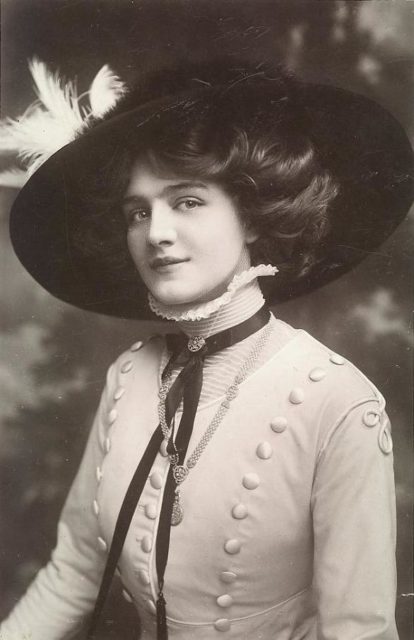
Other Edwardian musical comedies she starred in were The Silver Slipper by Owen Hall, with music by Leslie Stuart (1901-1902), and Three Little Maids (1903).
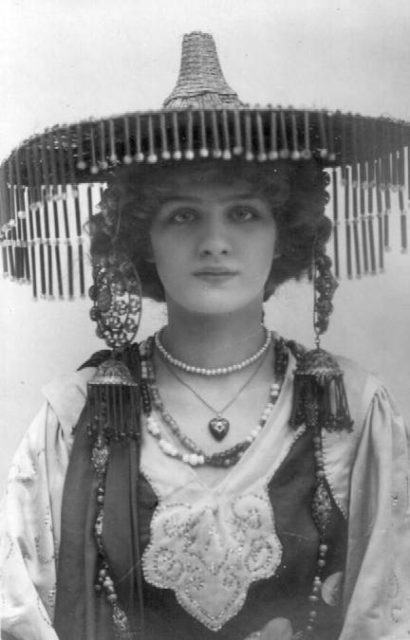
Admired for her charm and beauty on stage, she became one of the most photographed women of the Edwardian Era.
She built her reputation during several musical comedies before her big break in The Merry Widow, Franz Lehar’s operetta beginning in 1907.

At first, Elsie was worried and reluctant to take on the demanding part, she thought her voice to light to take on that role. The Edwardes persuaded her to take it, and she did.
She starred in several more operettas and musicals with some success. The Edwardes took her to the famous designer Lucile for style coaching.
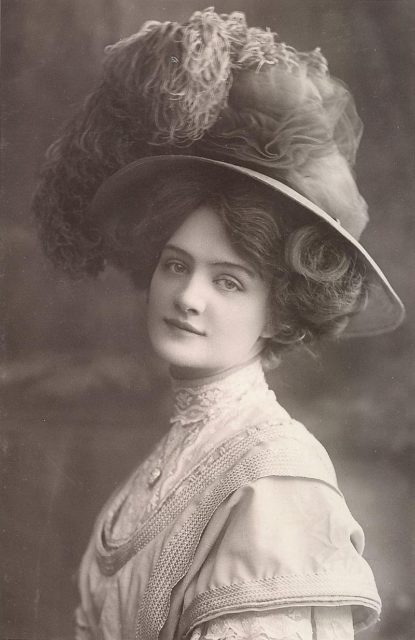
Lucile wrote later, “I realized that here was a girl who had both beauty and intelligence, but who had never learned how to make the best of herself.
So shy and diffident was she in those days that a less astute producer than George Edwardes would probably have passed her over and left her in the chorus”.
The production, with English lyrics by Adrian Ross, opened in June 1907 and ran for 778 days at Daly’s Theatre.
The show was a huge success for the creators and mad Elsie a major celebrity.
There was one critic on opening night that praised “the youthfulness, the dainty charm and grace, the prettiness and the exquisite dancing with which Miss Elsie invests the part….
I share the opinion of most of the first-nighters, who considered it could not have been in better hands, and could not have been better handled…The night was a genuine triumph for Miss Elsie, and she well deserved all the calls she received”.
The Merry Widow costumes were designed by Lucile for Elsie (including the plumed hats that became a tremendous fad), and after that used Elsie to promote her fashions, designing her personal clothes and costumes for many other shows.
Lucile wrote, “That season was a very brilliant one, perhaps the most brilliant of the series which brought the social life of pre-war London to its peak.
And just when it was at its zenith a new play was launched with a new actress, who set the whole town raving over her beauty….” Elsie’s image was in huge demand by advertisers and on postcards, and she got a lot of gifts of great value by many male admirers (and even endowments).
Lucile said, “She was absolutely indifferent to most men for she once told me she disliked the male character and considered that men only behaved tolerably to a woman who treated them coldly”.
Even so, Elsie became one of the most photographed women of the Edwardian era. Per the Atlanta Constitution newspaper in America, writing in 1915:
“Perhaps her face is nearer to that of the Venus de Milo in profile than to any other famed beauty. There are no angles to be found about her any place…. If she came to America, she would undoubtedly be called the most beautiful woman in America. Nature never made a more brilliant success in the beauty business than she did with Lily Elsie. It was mostly from the nobility that her suitors came. Everyone agrees that Lily Elsie has the most kissable mouth in all England… she possesses the Cupid’s bow outline with the ends curving upward delicately, all ready for smiles…. Strangely enough, the women of the land were among her most devoted admirers”.

After her resounding success in The Merry Widow, Elsie played in 16 more musical comedies including, The Dollar Princess (1909), A Waltz Dream and The Count of Luxembourg, both of which were in 1911.
She retired from The Count of Luxembourg to marry Major John Ian Bullough, who was the son of a wealthy textile manufacturer. After getting married, she only returned to the stage for charity performances during the Great War.
Elsie and her husband moved to Gloucestershire village of Redmarley D’Abitot in 1920. After the move, she spent ten years just enjoying fox hunts and social events.
Unfortunately, her marriage was not a happy one, and she returned to the stage in 1927 to play Eileen Mayne in The Blue Train, at the Prince of Wales’s Theatre in London.
It was the English version of Robert Stoltz’s German musical comedy Madi.
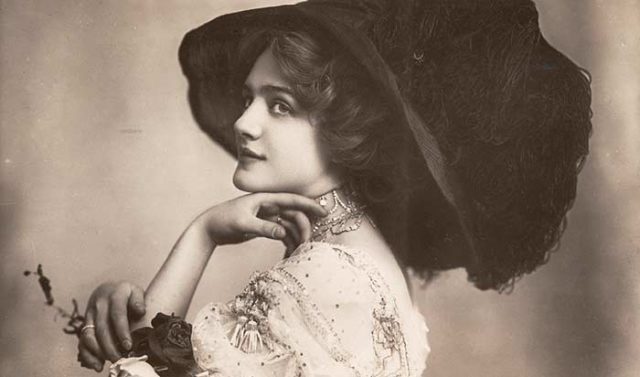
The last show she did before retiring for good was The Truth Game, back inside Daly’s Theatre in 1928-1929.
In 1930, Elsie’s divorced her husband after so many unhappy years.
What should have been her golden years, were filled with many illnesses and visits to hospitals and nursing homes. She was said to be a hypochondriac.
Her health continued to deteriorate, and she became subject to fits of bad temper.

She was diagnosed with serious psychological problems and had brain surgery, which is said to have improved her health somewhat.
After her surgery, her remaining years were spent in St. Andrew’s Hospital in London where she finally died at the age of 76, in 1962.
